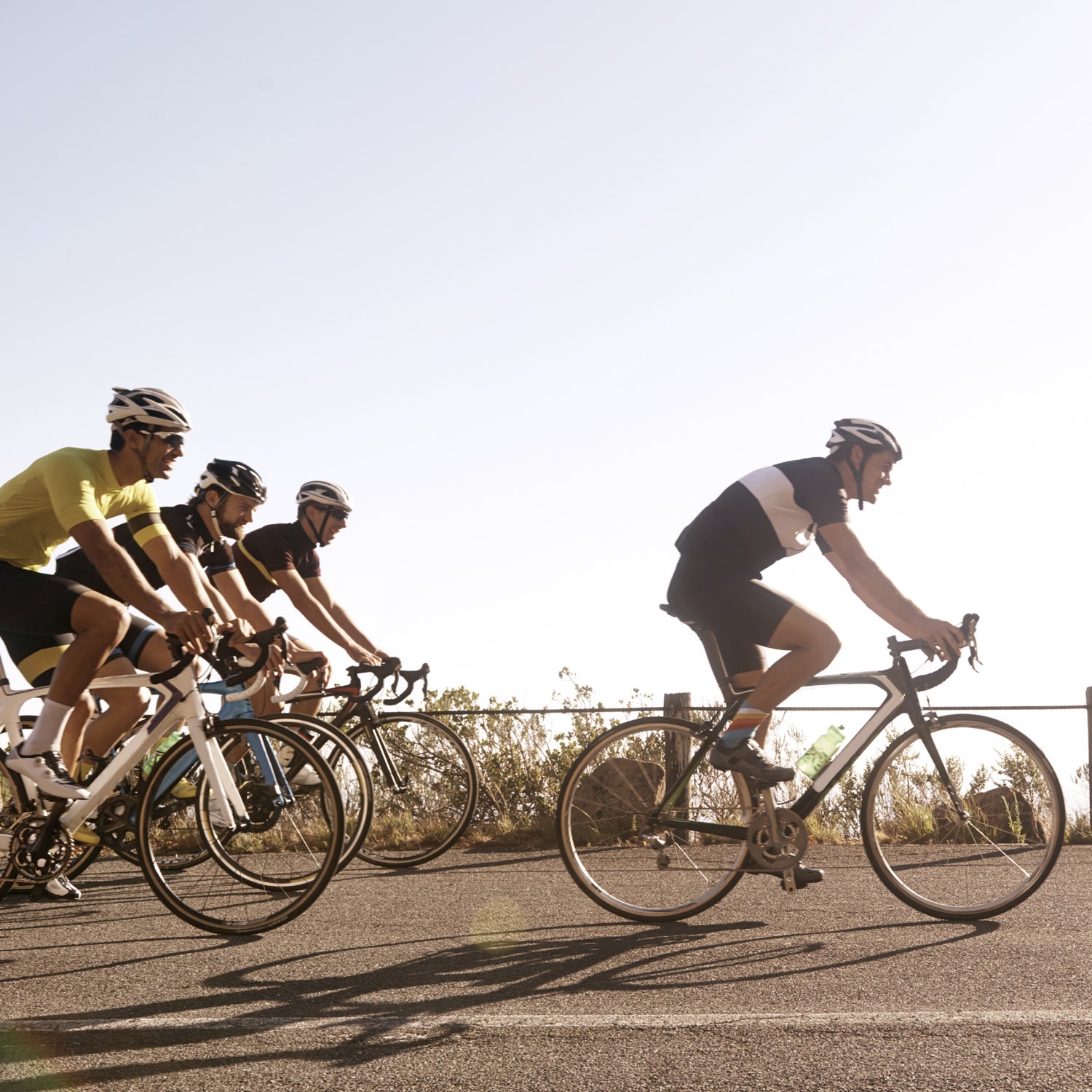Traffic, potholes, other cyclists. A lot of things make road riding seem scary. But while you can’t control the actions of others, you can do some things to cut your injury risk and actually have some fun doing it.
The University of Colorado Boulder’s head cycling coach, , is an expert in turning squirrely kids into solid riders. Here are his top 10 tips for keeping newbie roadies chasing pavement instead of eating asphalt.
1. Know Your State’s Laws
“They aren’t always straightforward,” Winkler says, “and most people don’t know what they are, including drivers.” There’s rarely a law that cyclists must ride in the bike lane if there is one, for instance. (“Most state laws say to ride as far to the right as is safe,” Winkler says.) And not all states have the same laws about riding two abreast versus single file—or the same law about at stop signs. So check out The League of American Bicyclists’ to get a leg up before you roll out.
2. Take Video
In all aspects of modern life, “part of personal safety now is having the ability to video,” Winkler says. (That shouldn’t make you paranoid; confrontations between cyclists and cars, pedestrians, or what have you don’t happen often, “they just get good media coverage,” Winkler says.) Luckily for cyclists, recording a ride is as easy as strapping a GoPro or to your helmet, handlebars, and/or seat post. Or you could opt for a two-in-one gizmo like Cycliq’s recording taillight, and recording front light.
3. Point Stuff Out
There’s not a universal way to point out road hazards like doors, people, animals, or cracks, or to let cyclists behind you know you’re slowing down or dropping back. “The rules tend to develop in a group-specific way,” Winkler says. So if you ride with a club, you’ll learn how the other members like to signal each other. Whatever you do, make sure it’s a physical gesture—or physical and vocal—rather than just vocal. “In my opinion, being super vocal is almost worse, because it doesn’t distinguish between the things that require extra concern, and those that are mundane,” Winkler says. When in doubt, simply point at the hazard, or hold your hand to your side to show you’re slowing down; everyone should understand those moves.
4. Be Predictable
“The number-one rule of riding a bike is that you’re not doing something that other riders wouldn’t expect,” Winkler says. Or drivers, for that matter. What does it mean to ride predictably? Ride in a straight line. “If you’re going to deviate from a straight line, do it in a way that assumes people are around you,” Winkler says. If you’re going to get squiggly, signal.
5. Announce Yourself
“If I catch someone and they want to sit on my wheel for a free draft, I don’t care,” Winkler says. Not all riders are that nice. Also, “if the rider’s not aware someone [is drafting], they may not ride in a way that’s safe for the person behind them.” In other words, they may ride unpredictably, and not point stuff out. A casual “Mind if I join you?” should suffice. (Cycling vocab lesson: Drafting means riding in someone’s slipstream, where wind resistance is reduced so it’s easier for you to maintain the same pace as the guy in front of you.)
6. Look Ahead
“If you’re too fixated on what’s right in front of you, you tend to overreact” to things, Winkler says. “Whereas if you were looking multiple lights in front of you, you’d see things developing, so your reaction would be more muted.” For new riders cycling in a group, looking that far ahead can be a challenge when the greatest hazard seems to be the wheel in front of you. But it’s something to keep in mind so a panic brake doesn’t cause a crash behind you.
7. Don’t Gap
A gap is exactly what it sounds like: a gap in distance between riders big enough to lose the draft. If you’re in the middle of a line of cyclists, and you start to gap, it’ll be harder for everyone else behind you to close the gap to stay with the people in front of you. So don’t be the guy who causes the gap. “You know when you’re in the red zone and it’s only a matter of time before you start to slow down,” Winkler says. “If you know that’s gonna happen, you can move out of line and gesture to the person behind you to come through and take your place before a gap develops.” Then you join back in at the back of the line, and everybody’s happy.
8. Don’t Half Wheel
“When you’re riding two abreast, the unwritten rule is the first two riders ride even—elbow to elbow or handlebar to handlebar,” Winkler says. Some riders, often unintentionally, ride half of a wheel in front of the person next to them. So the other rider will accelerate to be even, then the half-wheeler will inch forward again. The result: an unintentional increase in pace that may or may not anger your fellow riders.
9. Assume the Worst
“You have to imagine the worst thing someone will do so you can prepare for it,” Winkler says. Like opening a car door into your path, or cutting you off to turn right. If there are parked cars on your right, and you’re already riding out of the door zone, a swinging door won’t catch you by surprise and knock you down.
10. Ride in the Lane
“You’re safer if you take up more of the lane—whether there are parked cars on the side or not—because then cars have to acknowledge your existence,” Winkler says. “Whereas if you’re riding within six inches of the edge of the road, then a car can assume they have room to go by you. If they’re wrong, you lose.”


